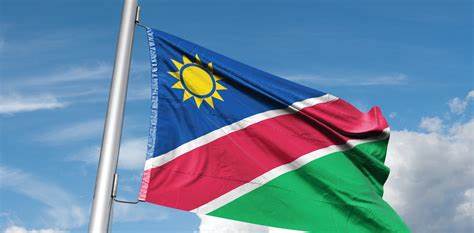Staff Reporter
Namibia’s ruling party, the South West Africa People’s Organization (SWAPO), in power since the country’s independence in 1990, is heading into Wednesday’s elections facing mounting challenges. While a decline in voter support seems likely, SWAPO’s political dominance remains intact due to a fragmented opposition and historical resilience.
SWAPO’s weakening grip on power was first evident in the 2019 parliamentary elections, where it lost its two-thirds majority for the first time. The late President Hage Geingob garnered just 56% of the vote, the party’s weakest performance. Subsequent local elections in 2020 saw SWAPO lose control of key urban centers, including the capital, Windhoek, and the coastal city of Walvis Bay.
Despite these setbacks, political analyst Rakkel Andreas argues that the situation should not be generalized as part of a regional decline in liberation movements. “The political dynamics in each country are too distinct for such broad categorizations,” she noted, emphasizing that Namibia’s political landscape is unique.
SWAPO’s continued dominance owes much to the disunity among opposition parties. A total of 21 parties and 15 presidential candidates are contesting the elections, but the lack of a cohesive opposition coalition undermines their effectiveness.
“The fragmentation is not about ideology but personal rivalries and egos,” said lecturer Rui Tyitende. Namibia’s proportional representation system also allows smaller parties to win parliamentary seats, which, according to political scientist Henning Melber, has attracted candidates more interested in personal gain than public service.
The opposition’s inability to maintain momentum from their 2020 successes has further played into SWAPO’s hands. Failed coalitions, particularly in Windhoek, have eroded voter confidence. “With this opposition, SWAPO has a better chance of emerging relatively unscathed,” Melber added.
A key figure in this election is Netumbo Nandi-Ndaitwah, SWAPO’s candidate for president. Currently serving as vice president, Nandi-Ndaitwah could become Namibia’s first female head of state. At 72, she has pledged to tackle youth unemployment by creating 500,000 jobs over five years, backed by an $85 billion investment plan. Critics, however, question the feasibility of this ambitious goal.
Nandi-Ndaitwah’s campaign also focuses on women’s rights, including equal pay and healthcare. Her clean political record and extensive experience in government positions make her a formidable candidate. “She is perceived as a leader with no skeletons in the closet,” noted Tyitende.
Panduleni Itula, leader of the Independent Patriots for Change (IPC), poses the most significant threat to SWAPO. A former SWAPO member and dentist, Itula secured 30% of the vote in the 2019 presidential race. His new party aims to capitalize on disillusionment with the ruling party.
However, Itula faces potential backlash due to his British wife, which some critics view as a reminder of Namibia’s colonial past. “The symbolism is problematic, and many Namibians may struggle to accept it,” said Andreas. This reflects lingering resentment from Namibia’s colonial history under German and South African rule.
While SWAPO is expected to retain the presidency, the parliamentary race could see significant shifts. The IPC and the left-wing Affirmative Repositioning (AR) party, led by former SWAPO member Job Amupanda, are projected to make gains. This could force SWAPO into forming coalitions, a scenario that would alter Namibia’s political landscape.
“A space will have to be created for the IPC and AR, likely at SWAPO’s expense,” Andreas predicted.
This election is seen as a critical test for Namibia’s democracy. Preliminary votes from Namibians abroad and uniformed personnel suggest a SWAPO victory, but the strength of the opposition will determine whether the ruling party can govern as freely as it has in the past.
As the country heads to the polls, the outcome will not only shape Namibia’s political future but also reflect broader regional trends in governance and opposition dynamics. Whether SWAPO can rejuvenate its appeal or face growing pressure from an increasingly assertive opposition remains to be seen.




